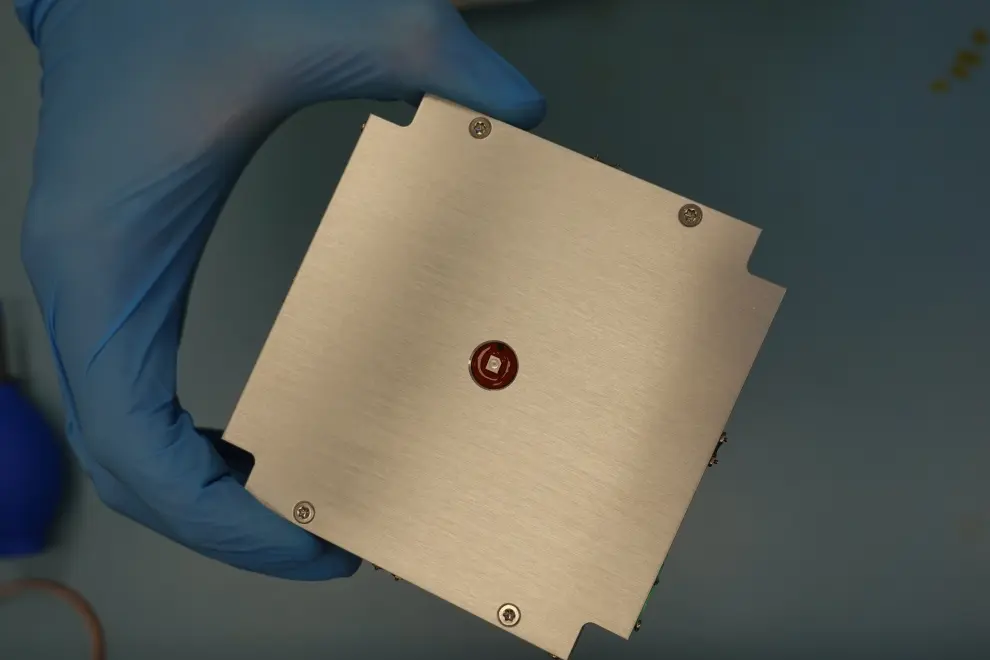Slovenian satellite captures ESA's technology image of the week
An image of a distant, partly shadowed Earth captured by a Slovenian nanosatellite using an extremely miniaturised camera has been chosen by the European Space Agency as its technology image of the week.
The camera, measuring less than 2 cubic millimetres, took the image from a 6,000 km altitude orbit aboard the shoebox-sized TRISAT-R CubeSat.
Developed at the University of Maribor, TRISAT-R is Slovenia's second space mission. It flew on Europe's inaugural Vega-C launch last year to the relatively inhospitable environment of medium-Earth orbit.
The mission's orbital path takes it right through the heart of the ionosphere - an electrically active layer of Earth's atmosphere - and the inner Van Allen radiation belt, one of the harshest radioactive environments in space, the Slovenian space technology company Skylabs, which is involved in the TRISAT-R project, said.
The satellite provides daily radiation data via its on-board instruments, and the data can be used for monitoring space weather, for example.
 An extremely miniaturised camera of the Slovenian nanosatellite TRISAT-R. Photo: Trisat-R/University of Maribor
An extremely miniaturised camera of the Slovenian nanosatellite TRISAT-R. Photo: Trisat-R/University of Maribor
The satellite has two miniaturised cameras "which demonstrate how we can apply extremely miniaturised photography technology in our future research and development of state-of-the-art pointing and control systems", TRISAT-R project manager Iztok Kramberger was quoted as saying.
The project's main interest has been in capturing examples of the Black Sun effect where over-saturation of pixels can cause very bright areas to appear dark.
"We also managed to capture this stunning image of our planet Earth," Kramberger said, adding that the image is extremely low-resolution as the cameras are not designed to take pictures or look at Earth from such a distance.
The two miniaturised cameras are directly exposed to strong radiation and have no protection against it.
Skylabs also managed to design and manufacture their first integrated circuit for space exploration purposes in less than 18 months, during a time when there was a shortage of semiconductors.
They have successfully managed to demonstrate its abilities to perform in even the harshest radioactive environments.
TRISAT-R's commissioning phase is due to conclude later this month, encompassing 16 months of successful in-orbit operation.


